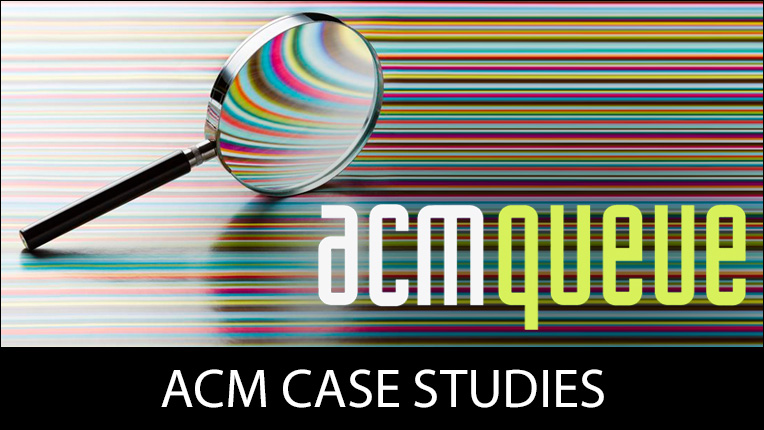ACM SGB Meeting Materials March 19, 2005
Bob Walker requested that the SGB leaders come prepared to discuss their governing structures. Several SIGs have recently modified their bylaws to allow more flexibility with officer positions and elections. Leaders were asked to share their governance goals and intentions with the group.
SIGDA has a 5 person EC with those officers having the right to vote. They also have an appointed advisory board that doesn't have voting rights but comlements the officers. In the past SIGDA found 2 great candidates for each position and it was difficult to lose one of them in the election. The new SIGDA model allows a slate of 8 plus people with membership voting in the top 6 to the EC. The EC will then vote among themselves for the named positions. That allows the best 2 people stay involved.
Some SIGs have indicated they're grooming someone for Chair and have requested exemptions from the SGB EC to run a single candidate. Other SIGs have a crucial position and have asked to run one person. Some of the bylaw changes now permit SIGs to run single candidates.
SIGCSE has the standard structure of officers but did change length of terms. 2 years was short and they were requesting an automatic extension. Terms are now 3 years with officers being allowed to run again but not permitted to extend.
SIGDOC has the standard officer positions with 2 year terms but now includes 2 or 3 members at large.
SIGCOMM may consider changing their term length. 3 year terms seem attractive. 2 years is not enough and 4 years is too long. They have concerns about all leaders having to agree to renew. It can force an overcommitted leader into a position they don't really want.
SIG METRICS has the standard structure of officers and appointed officers.
SIGMICRO finds 2 candidates to run for the position of Chair and 5 candidates for a 4 person member at large committee. The distribution of tasks is decided by the Chair and Nominating Committee for continuity
SIGART was a conference only SIG with appointed officers. The new single SIG designation has forced them back into the election process. They will run 2 candidates for each of the 3 officer positions with 3 year terms.
SIGPLAN VC is the conference overseer and for 4 elections in a row and they've asked for an exception to run a single candidate each time. The have modified their bylaws to allow a single candidate for this position. They will run 2 candidates for Chair, 1 or more for VC and at least seven consenting candidates for the remaining six elected positions of the Executive Committee.
SIGCHI has made many changes to governance and has of elected officers run in pairs. The President and VP run as a pair as well as VP of finance and Pubs. SIGCHI also has members at large. Other positions are appointed so that an individual can continue even under a new board. There is a long tradition of an extended executive committee of who at any given time 4 or 5 are active. SIGCHI is lucky to have a long list of willing volunteers and the officers are being encouraged to delegate.
SIGMIS has a standard structure of 3 officers with 2 year terms. Three year terms may be better so the SIG may consider this in the future. They also may want to separate the positions of Secretary/Treasurer.
SIGOPS has a standard structure of 3 officers with 2 year terms. The EC position of Chair plus Members-at-Large may be a better way to govern. SIGOPS may consider a change in the future.
SIGACCESS has a standard structure of 3 officers with 2 year terms.
SIGIR runs 2 candidates for each of the 4 elected offices for a 2 year period. They often extend so they are considering moving to a 3 year model. They have no trouble securing candidates. There are lots of opportunities for involving people making a nice advancement path.
SIGACT has 3 named officers and 2 members-at-large. They will run at least 2 candidates for chair and 5 candidates for the other named positions.
SIGAda has a large slate of officers: past chair, VC for conferences, VC liaison, Secretary, Treasurer, Int'l Rep. Terms were always 2 years and 2 candidates for each.
SIGAPP was a conference SIG so the current 4 officers were appointed. They are up for election and are running 2 candidates for each position. Terms are 2 years. The slate includes 3 of the current officers that are standing up for reelection. All people that lose will be appointed to a committee.
SIGSAM experienced a problem with the requirement to have all officers renew. This could force a SIG to bring along someone that doesn't want to renew.
Some SGB members suggested that there be no automatic renewals just longer terms.
The SGB will look at this topic again with the expectation that the SIG leaders that have modified their structure provide an update on how it is working.
ACM Case Studies
Written by leading domain experts for software engineers, ACM Case Studies provide an in-depth look at how software teams overcome specific challenges by implementing new technologies, adopting new practices, or a combination of both. Often through first-hand accounts, these pieces explore what the challenges were, the tools and techniques that were used to combat them, and the solution that was achieved.

Lifelong Learning
ACM offers lifelong learning resources including online books and courses from Skillsoft, TechTalks on the hottest topics in computing and IT, and more.

